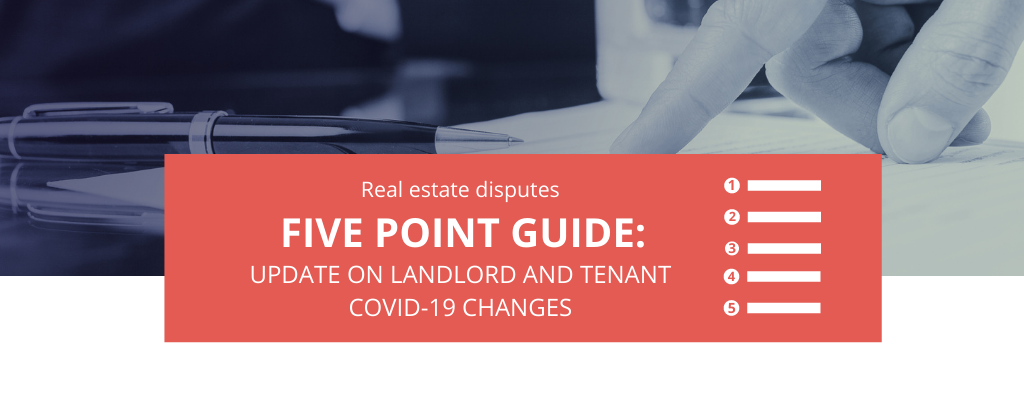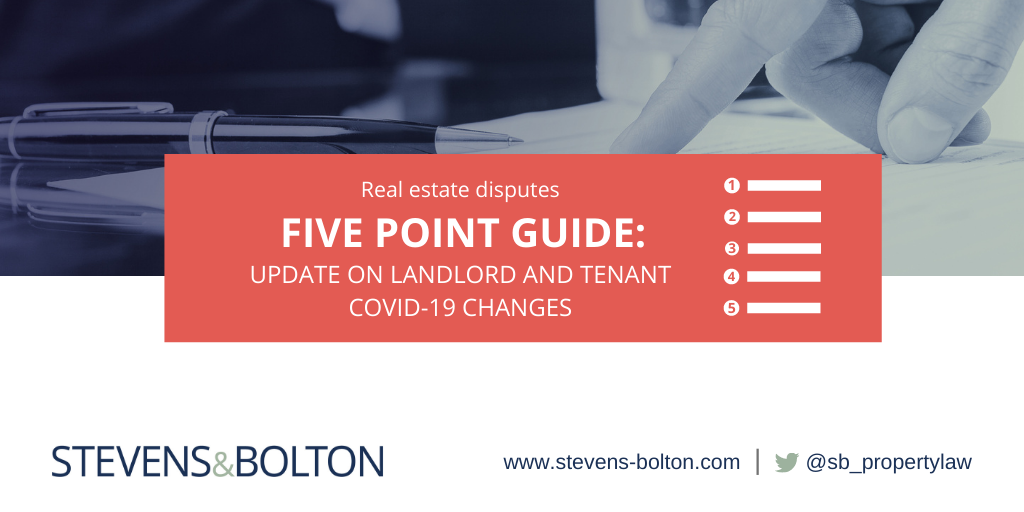 The government’s announcements last month in the run-up to the September quarter day and subsequent update of regulations, extended the protections for commercial tenants and continue to restrict landlords’ options over unpaid rent. So what has changed and what is the current position?
The government’s announcements last month in the run-up to the September quarter day and subsequent update of regulations, extended the protections for commercial tenants and continue to restrict landlords’ options over unpaid rent. So what has changed and what is the current position?
- The moratorium on forfeiture introduced by section 82 of the Coronavirus Act 2020 was the headline protection for tenant businesses enacted in March as we first entered lockdown. This was just as a quarter’s rent was falling due and certain sectors had to close down completely. It originally covered essentially one quarter’s rent. Having been extended from June to 30 September 2020, the moratorium on forfeiture for rent arrears was again recently extended to 31 December 2020. The ban on forfeiting a commercial lease for rent arrears will have been in place for three quarters at that point; will it be extended again? Please see our earlier article on what the moratorium means for landlords and tenants here.
- A landlord’s ability to effect CRAR for unpaid rent (Commercial Rent Arrears Recovery – see our earlier article here) is now further restricted by an increase in the amount of unpaid rent that must be outstanding before CRAR can be exercised. Originally needing just seven days’ of unpaid rent in our pre-COVID world, this has been increased as each quarter day approached to be just over the number of days since 25 March 2020 - the March quarter day. Currently, the amount of rent that must be outstanding before landlords can use CRAR is 276 days – one day more than the period covered by the March, June and September quarters combined. On 25 December 2020 (until 31 December 2020 currently) it will increase to 366 days – one year plus one day of rent must be outstanding to effect CRAR. This essentially covers all unpaid rent from 25 March 2020 to 24 March 2021. The recent changes also continue to impact on a landlord pursuing recovery from subtenants when its tenant is not paying, as the same amount must be outstanding to recover rent from subtenants.
- The restrictions introduced by the new Corporate Insolvency Governance Act 2020 (CIGA) have been extended, restraining the presentation of winding up petitions based on statutory demands served between 1 March 2020 to 31 December 2020 subject to certain conditions. See our earlier article here.
- The court’s stay on possession claims ended on 20 September 2020. This covered both residential and commercial possession actions. There is a substantial backlog of possession claims that have not progressed since March that will now need to work their way through the system and large numbers of claims may now be issued that were held back during the stay. Commercial landlords are unlikely to be prioritised above residential claims based on current criteria and should be prepared for a long wait for possession. Our recent article here covers the current position in more detail.
- The Code of Practice for commercial landlords and tenants introduced in June encouraged parties to be open and transparent about their financial positions, to collaborate, to act in good faith and to act "reasonably and responsibly". Tenants who can pay in full should and tenants who cannot should pay what they can. It remains non-binding and is in place until 24 June 2021. The government expects landlords and tenants to follow the Code and while saying it would be kept under review and further steps taken if parties were not engaging, there is little currently to suggest there are plans to enact further intervention.
The property disputes team at Stevens & Bolton ran a webinar on these and other topical landlord and tenant issues on the September quarter day. Our next webinar for the December quarter day (Christmas Day) will run in January when we will have the up to date picture on these current restrictions and what 2021 holds for commercial property more generally. Click here to contact us for further information. Please do not hesitate to contact the team should you have any queries on these or any other issues.
This note was prepared on 16 October 2020 and reflects the position at that point in time, as do the earlier articles referred to. Current guidance may of course change and up to date legal advice should always be taken on any relevant issue covered here affecting your business.

 Helen Wheddon
Helen Wheddon